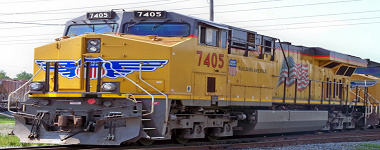Week 10 of 2016 shows same week total rail traffic (from same week one year ago) declined according to the Association of American Railroads (AAR) traffic data. All rolling averages are again negative and in decline.

The deceleration in the rail rolling averages began one year ago, and now rail movements are being compared against weaker 2015 data. There were port labor issues one year ago which affected intermodal movements – which skew the results both positively and negatively (this week negatively).
This analysis is looking for clues in the rail data to show the direction of economic activity – and is not necessarily looking for clues of profitability of the railroads. The weekly data is fairly noisy, and the best way to view it is to look at the rolling averages (carloads and intermodal combined).
A summary of the data from the AAR:
The Association of American Railroads (AAR) today reported U.S. rail traffic for the week ending Mar. 12, 2016.
For this week, total U.S. weekly rail traffic was 489,177 carloads and intermodal units, down 11.6 percent compared with the same week last year.
Total carloads for the week ending Mar. 12 were 243,275 carloads, down 12.8 percent compared with the same week in 2015, while U.S. weekly intermodal volume was 245,902 containers and trailers, down 10.3 percent compared to 2015. Please note, intermodal volumes last year at this time were higher than usual, reflecting the resolution of a labor dispute at West Coast ports.
Four of the 10 carload commodity groups posted an increase compared with the same week in 2015. They included miscellaneous carloads, up 19.7 percent to 9,448 carloads; motor vehicles and parts, up 15.7 percent to 20,104 carloads; and chemicals, up 4.7 percent to 31,529 carloads. Commodity groups that posted decreases compared with the same week in 2015 included coal, down 34.1 percent to 71,221 carloads; petroleum and petroleum products, down 13.1 percent to 11,067 carloads; and metallic ores and metals, down 7.1 percent to 19,285 carloads.
For the first 10 weeks of 2016, U.S. railroads reported cumulative volume of 2,437,375 carloads, down 12.9 percent from the same point last year; and 2,599,835 intermodal units, up 5.6 percent from last year. Total combined U.S. traffic for the first 10 weeks of 2016 was 5,037,210 carloads and intermodal units, a decrease of 4.2 percent compared to last year.













Leave A Comment